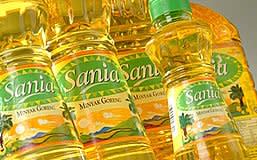3 industry woes Wilmar must hurdle by 1Q13

More urgent concerns than the 8% price hike.
According to Phillip Securities, Wilmar share price has increased significantly recently. The company’s share has appreciated by about 13% since our rating upgrade on 12 November 2012 at S$3.17.
Similarly, CPO prices have also increased by about 8% over the past one month. Meanwhile, China’s soybean crushing margin went back to negative region again since mid-Oct, indicating that the soybean crushing situation in China still remain difficult.
Here's more from Phillip Securities:
We believe CPO price will continue to gain some strength in 1Q13 before fading gradually going into 2Q13 amid: 1) seasonally weak CPO demand in absence of major celebrations/festivities in Asia; 2) stronger CPO supply production coming from both Malaysia (due to recovery from lagged El Nino impact) and Indonesia (due to improving plantation age profile); and 3) record-high palm oil stockpile at the start of 2013.
Despite lower edible oil prices, we do not expect these to have much of a negative impact on Wilmar albeit revenue may fall. Nonetheless, being a significant downstream player, the group may benefit from lower feedstock prices. In fact, based on our estimates, it still sources around 55% of its requirements from third party plantation companies for its Palm & Lauric business.
More From Singapore Business Review

 Yahoo Finance
Yahoo Finance 
